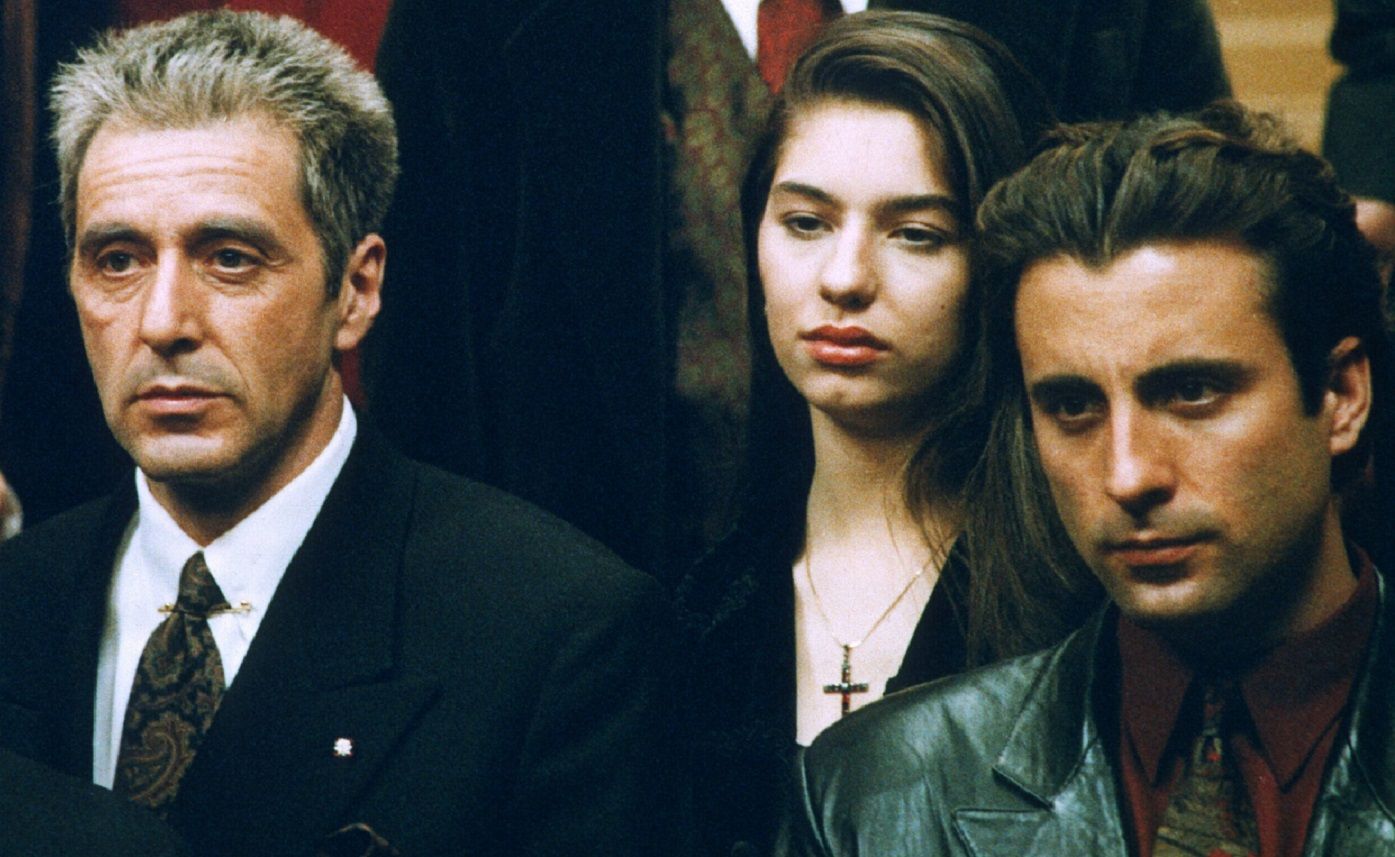"The Godfather Part III" (1990): A Somber Coda to a Legendary Saga
The Godfather Part III (1990), directed by Francis Ford Coppola, serves as the final chapter of one of cinema’s most revered trilogies. Though often considered the weakest of the three, the film offers a reflective and elegiac conclusion to the story of Michael Corleone, the tortured patriarch of a once-mighty crime family. It is a film about guilt, redemption, legacy, and the inescapable consequences of a life built on blood and betrayal.
Set in 1979, years after the events of The Godfather Part II, the film finds Michael Corleone (Al Pacino) older, weary, and desperate to legitimize his family's business empire. Seeking forgiveness for his past sins—most notably the murder of his brother Fredo—Michael turns his focus to philanthropy and religion. He donates millions to the Catholic Church and begins negotiations to buy controlling shares of an international real estate company tied to the Vatican, hoping to secure a future free from crime for his family.

However, as with every attempt to escape the Corleone legacy, Michael is pulled back into the treacherous world of power and corruption. The deal is marred by deception, and Michael quickly realizes that the Church itself is not immune to the same greed and betrayal he tried to leave behind. At the same time, his protégé, Vincent Mancini (Andy García)—the illegitimate son of Sonny Corleone—rises in influence and becomes a new force within the family. Vincent is passionate, ambitious, and violent, echoing Michael’s younger self.
Much of the film’s emotional weight comes from Michael’s relationship with his children, particularly his daughter Mary (played by Sofia Coppola), whose romantic involvement with Vincent adds both emotional tension and tragic foreshadowing. Michael's efforts to atone and shield his family from the consequences of his past unravel in heartbreaking fashion, leading to a climactic opera house sequence that combines brutal violence with tragic inevitability.

Al Pacino delivers a powerful performance, portraying Michael as a man haunted by regret. He is no longer the cold, calculating figure of the earlier films; here, he is a tragic patriarch, desperate to find peace but increasingly aware that peace may be beyond his reach. Andy García brings energy and danger to Vincent, while Diane Keaton returns as Kay, offering a grounded and emotionally complex presence in Michael’s life.
Despite being nominated for seven Academy Awards, The Godfather Part III received mixed reviews upon release, due in part to its slower pace, convoluted plot, and the controversial casting of Sofia Coppola in a central role. Yet, over time, the film has been re-evaluated by many as a necessary, if flawed, conclusion to Michael Corleone’s arc.

In 2020, Coppola released a re-edited version titled Mario Puzo’s The Godfather, Coda: The Death of Michael Corleone, which tightened the narrative and reframed the story closer to his original vision—earning greater critical appreciation.
Ultimately, The Godfather Part III is a tale of moral reckoning. While it may not reach the perfection of its predecessors, it provides a poignant and sorrowful end to the Corleone saga. It’s not about power anymore—it’s about the cost of having wielded it.

_svg-1751682125-q80.webp)

